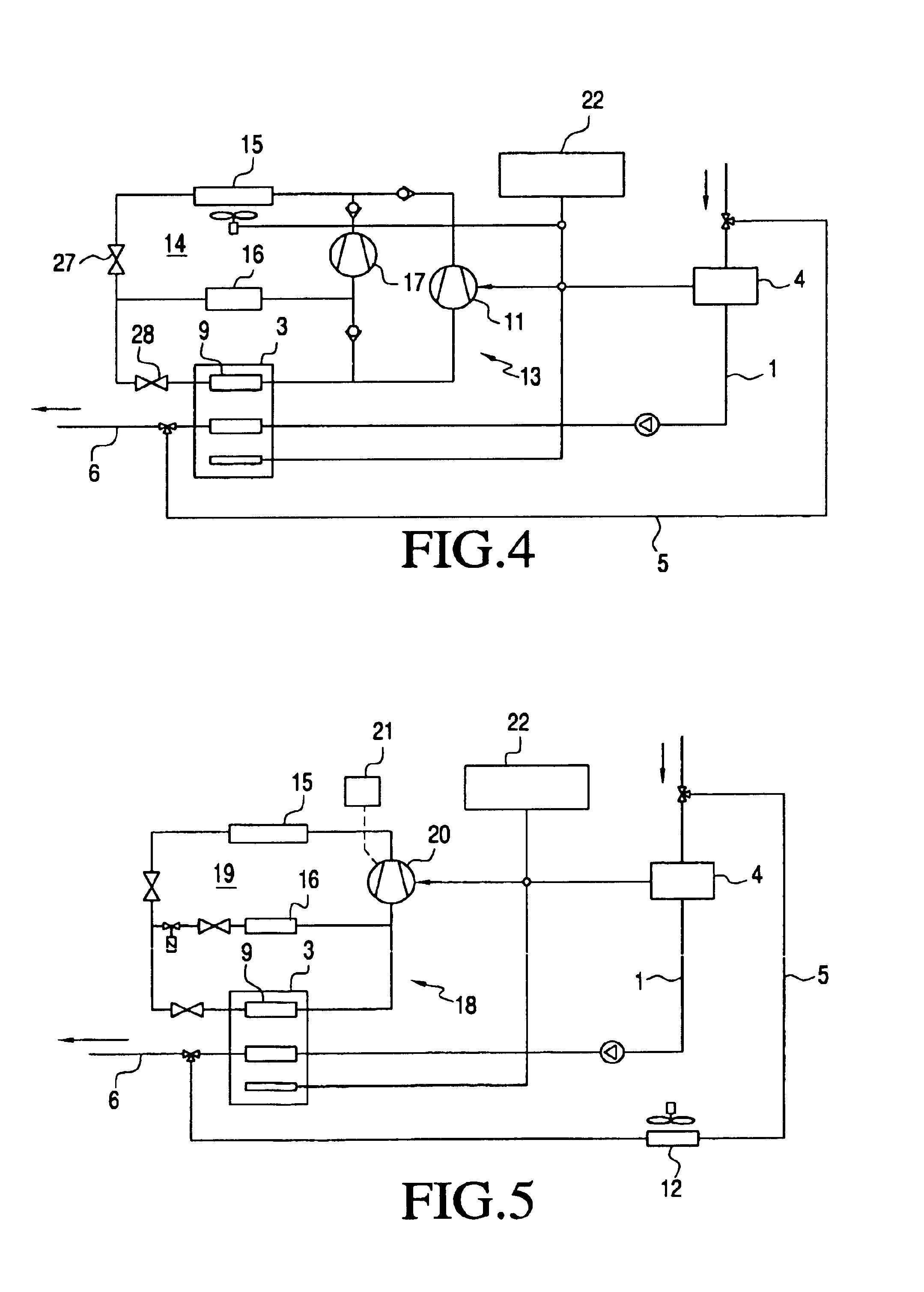System with an internal combustion engine, a fuel cell and a climate control unit for heating and/or cooling the interior of a motor vehicle and process for the operation thereof
a technology of internal combustion engine and climate control unit, which is applied in the direction of fuel cell applications, fuel cell applications, sustainable buildings, etc., can solve the problems of internal combustion engine heat generation, high engine efficiency, and limited thermal energy available in the heat transfer circui
- Summary
- Abstract
- Description
- Claims
- Application Information
AI Technical Summary
Benefits of technology
Problems solved by technology
Method used
Image
Examples
Embodiment Construction
FIG. 1 shows a system in accordance with the invention in a simple schematic. While driving, a climate control unit 3, a PEM fuel cell 4 and an internal combustion engine 2 are joined together in a heat transfer circuit 1. Both the heat produced in the internal combustion engine 2 and also the heat produced in the fuel cell 4 are transported via the heat transfer circuit 1 to the climate control unit 3 which can use the heat for heating of the vehicle interior via a suitable heat exchanger. Between the fuel cell 4 and the internal combustion engine 2, there is a 3-way valve 24 which is designed to interrupt the connection between the fuel cell 4 and the internal combustion engine 2 in the heat transfer circuit 1 and instead to bridge the segment 6 of the heat transfer circuit 1 which runs through the internal combustion engine 2 by a bypass line 5. The coolant is circulated therefore in the resulting isolated circuit only through the fuel cell 4 and the climate control unit 3. A pum...
PUM
 Login to View More
Login to View More Abstract
Description
Claims
Application Information
 Login to View More
Login to View More - R&D
- Intellectual Property
- Life Sciences
- Materials
- Tech Scout
- Unparalleled Data Quality
- Higher Quality Content
- 60% Fewer Hallucinations
Browse by: Latest US Patents, China's latest patents, Technical Efficacy Thesaurus, Application Domain, Technology Topic, Popular Technical Reports.
© 2025 PatSnap. All rights reserved.Legal|Privacy policy|Modern Slavery Act Transparency Statement|Sitemap|About US| Contact US: help@patsnap.com



